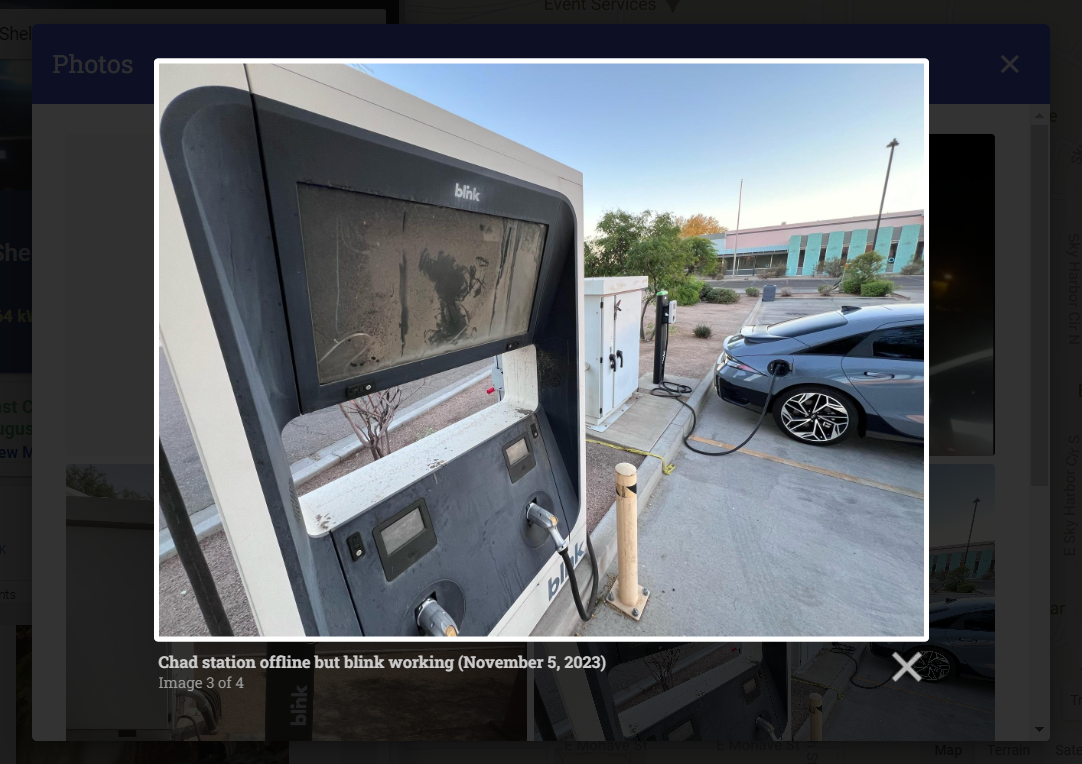Sign up for daily news updates from CleanTechnica on email. Or follow us on Google News!
A recent article at Business Record shares the story of Casey’s General Store, a chain of convenience stores spread across seventeen U.S. states, and their recent decision to hold off on installing EV charging for now.
“Demand in our [17-state] footprint just isn’t there quite yet,” President and CEO Darren Rebelez said during a Q&A session after announcing earnings results. “We’re taking a measured approach in terms of having chargers and being able to understand the consumer dynamic around the charging experience. … We don’t want to get too aggressive on the investment side because we believe that the charging technology will continue to evolve over time, as it has already.”
Before we jump to concluding that Casey’s leadership is just being ignorant about EV charging, we have to keep in mind that the company does have some EV charging stations on a small percentage of its lots, operated by third parties like Tesla. During this time, the company has gathered some data. At each of the 4o locations, an average of 330 gasoline transactions occur per day, while there are only an average of 13 EV charging sessions. The CEO also says that it takes an average of 35 minutes for drivers to get to 80%, and that’s not an experience he’d like to see the company provide for customers.
“That’s not a real convenient experience [for consumers]. We don’t want to invest a lot of money ahead of that demand curve, and then by the time demand gets there, charging technology that we just spent money on, has changed,” he said.
In short, it sounds like the company wants to hold off for now and wait for the technology to improve instead of investing in today’s charging technology.
Ways This Argument Is Right
Before I get to why I think this isn’t the right call, I’d like to be fair and provide some reasons that this could be a reasonable call for someone bound by fiduciary duty. I’ll shoot this down after, but I want to share what the company and others like it are probably thinking so we can all be on the same page. Feel free to add your own thoughts in the comments or argue with me on social media about this.
What comes to mind right away is that there are abandoned charging stations out there, and not only from the EV1 era. During the early 2010s, when the Nissan LEAF was new, other companies were scurrying to bring an EV to market, the Chevy Volt was new, and Tesla was working on the Model S, EVs seemed hot, especially in metro areas. Nissan put in charging stations at many dealers in larger metros. Some gas stations followed suit, trying to get a cut of the action. In the Phoenix metro area (among others), Sears tire shops even installed some Blink CHAdeMO-only stations.

Where’s CHAdeMO today? Basically dead. CHAdeMO cars will be able to charge at CCS/CHAdeMO stations until station owners wise up and replace the cords with NACS connectors to get more customers. CHAdeMO-only stations simply don’t see enough business today to stay afloat or get maintained. Many other CCS/CHAdeMO stations from this era that only provided 50 kW max experienced hardware failures and weren’t repaired. For example, here’s a page announcing a new charging station that opened in Picacho, Arizona in 2012, a station that’s abandoned today. Here’s another listing for a station in Tucson at an ARCO am/pm … also gone.
While these stations were mostly funded by government or third parties, money was put into them and today they no longer exist due to obsolescence, hardware failures that couldn’t be repaired affordably, or simply lost interest (and likely some mix of these factors).
To expect a company to invest now, when things may still be in flux, could be to ask them to waste investor money on charging hardware that might be useless in just a few years.
EV Charging In The US Has Matured & Coalesced Around Standards Since Then
Now, let’s examine why that argument is probably not as valid as it seems on the surface. In short, things have changed a LOT in the last 5–8 years since we’ve seen those stations go to crap.
First off, we’ve seen charging standards come together. CHAdeMO is about to no longer be a thing for new cars. CCS is going to be largely phased out starting next year as manufacturers switch to the NACS standard, based on Tesla’s connector. So, it’s now a very safe bet to build a station that charges NACS vehicles without needing to worry about NACS dying off and other standards taking over.
There are still plenty of vehicles with CCS and CHAdeMO that will need to be charged, but the industry has answers for that, too. Almost all hardware providers have embraced a modular approach. Anyone interested in setting up a station can do what Franklin’s Charging did recently and offer a mix of CCS, CHAdeMO, and NACS charging at each location. When enough of the CHAdeMO cars get into the junkyard to stop coming for a charge, the CHAdeMO cables can be swapped out for NACS. Once everyone has an adapter, the CCS cables can also be swapped out as part of normal maintenance. So, that excuse is out.
Station reliability has also largely improved. Better companies are in the market now, and the providers who built unmaintainable stations in the past are either better now or are no longer with us. Like any purchase, research can be done to see who’s making good gear and has a good track record, and that’s just a normal part of due diligence.
Finally, charging times are not going to improve much more than they are now. With a 250–350 kW station, the best of today’s EVs can charge from 10–80% in under 20 minutes. For shallower charges, a 10-minute charging time is common, too. We don’t need to wait for 500 kW stations (because they are available today), and passenger cars do not need megawatt connections.
So, really, there’s no reason to wait for better hardware and standards to get into EV charging. We’re there already. It’s time to get into it.
Featured image by Jennifer Sensiba.
Have a tip for CleanTechnica? Want to advertise? Want to suggest a guest for our CleanTech Talk podcast? Contact us here.
Latest CleanTechnica.TV Videos
[embedded content]
Advertisement
CleanTechnica uses affiliate links. See our policy here.
- SEO Powered Content & PR Distribution. Get Amplified Today.
- PlatoData.Network Vertical Generative Ai. Empower Yourself. Access Here.
- PlatoAiStream. Web3 Intelligence. Knowledge Amplified. Access Here.
- PlatoESG. Carbon, CleanTech, Energy, Environment, Solar, Waste Management. Access Here.
- PlatoHealth. Biotech and Clinical Trials Intelligence. Access Here.
- Source: https://cleantechnica.com/2024/06/30/should-convenience-stores-wait-for-ev-charging-tech-to-mature/




